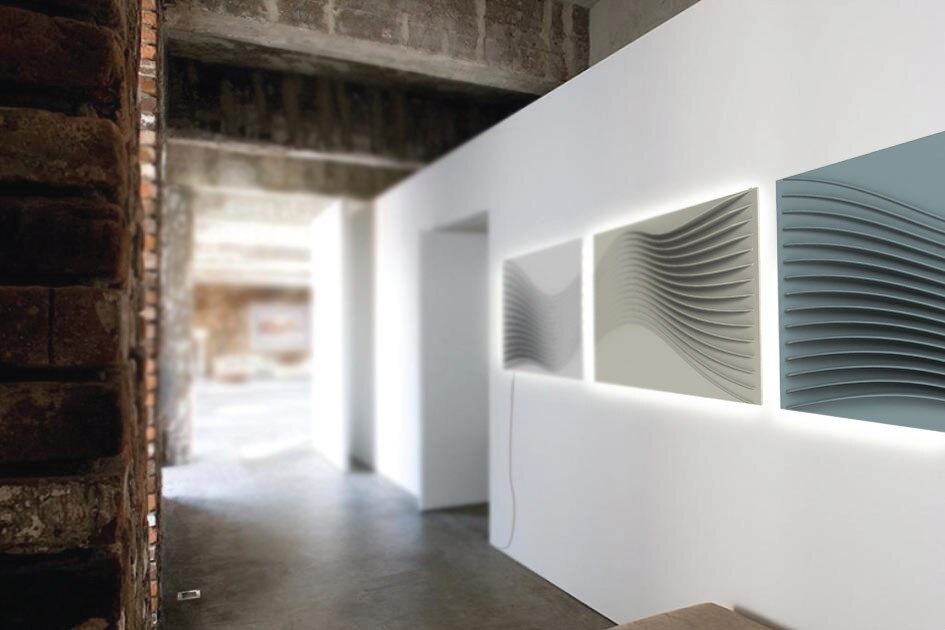The laws of supply and demand – maybe with a pinch of capitalism – generally dictate how much homes and businesses might spend per month on power. As such, consumers can expect to pay a premium for running heating or cooling systems during peak energy-usage times on cold or hot days. Orison Energy is preparing to help break this cycle with a pair of home batteries. The Orison Tower and Orison Panel charge up when utility rates are low and provide power when the rates are high.
You can think of the Orison Tower and Panel as giant, external lithium-ion battery packs that can power most appliances and home electronics. This concept isn't entirely new, as Tesla Motors announced its Powerwall home battery just a few months ago. Although many of Tesla's and Orison's proposed features are similar to each other, the Orison models have a few key elements that hold greater potential for consumer appeal.
The Orison Tower and Panel batteries are designed to be compact, lightweight, and plug-and-play. With a height of 34 in (86 cm) and width of 9 in (23 cm), the Tower could be mistaken for a small, standing floor fan. The Panel, sized at 22 x 28 x 2.5 inches (56 x 71 x 6.3 cm), might double as modern wall art if it's not tucked behind a large appliance, such as a refrigerator, where it can function without disrupting living spaces. Each of these units are expected to weigh about 40 lb (18 kg), which is light enough to carry without too much trouble.

Instead of having to hire professionals to wire the Orison batteries into a building's existing circuitry, as with the Tesla Powerwall, users simply plug them into existing wall sockets. This means that potential customers won't necessarily have to be homeowners. People living in dorms, renting rooms or apartments, or camping out in an RV park can benefit from the energy savings without any additional hardware requirements.
Aside from the mounting/hanging of the Orison Panel, these batteries have little more permanence than similarly-sized electronics. Users will be free to relocate them as desired.
Both Orison batteries are designed to store 2.0 kWh of energy, typically charging during the night when utility rates are the lowest. During the day, the Orison Tower and Panel will provide power to connected appliances/electronics independently.
"In the basic configuration, the system would provide power to those appliances during the super-peak time," explains Eric Clifton, Orison's co-founder and CEO. "Once you better understand your energy budget, you could run off the storage all day and only charge at night. We do foresee this becoming a common desired occurrence. Having this type of capability would allow customers to really budget."

Those with larger power needs, or who are wanting of a more robust system, could add multiple Orison systems to different circuits and/or supplement with expansion batteries. The Orison units have the potential to work in harmony with other energy sources (i.e: solar panels, wind-sourced energy, external generators) that are tied into the grid. When plugged into a socket, the Orison Tower and Panel actively monitor this grid activity, wirelessly alerting customers if/when a disruption or outage occurs. In these situations, Orison's proprietary software and technology are designed to automatically island the individual circuit(s), ensuring critical loads remain powered.
Wireless alerts from the Orison batteries are planned to be made available via a companion app. "Units will form a local mesh network and communicate via one common gateway to our Network Operated Distributed Energy Storage (NODES) Energy Cloud (NEC)," says Clifton. "The NEC pulls information such as utility rates, alerts, peak hours, and weather for solar customers while also monitoring the health of Orison. Our batteries have a 10-year performance warranty. If any systems are found to be performing poorly, we will alert the customer and dropship a replacement unit directly to the customer with a return package for the defective unit."
Orison plans to offer the Panel battery with inverter for US$1,600, with supplemental batteries costing $1,100 each. The Orison Tower will be priced at $1,950. The company plans to launch a Kickstarter campaign soon to provide pre-order savings and other incentives for early adopters.
Source: Orison Energy
UPDATE (Jan. 25/16): The Orison energy storage system is now on Kickstarter.








